Medieval House - Making the Base Roof
Last time we built the system that generates the blockout shape of our house and now let’s go on the roof.
First off we need to isolate top faces that will become our roof. SideFX labs has a nice node called split primitive by normal that will, as it says, split geometry by the way primitives are facing. Again you can make the exact same tool just by using a group node and grouping by primitive then splitting by that group. Then use fuse and divide to get rid of shared edges.
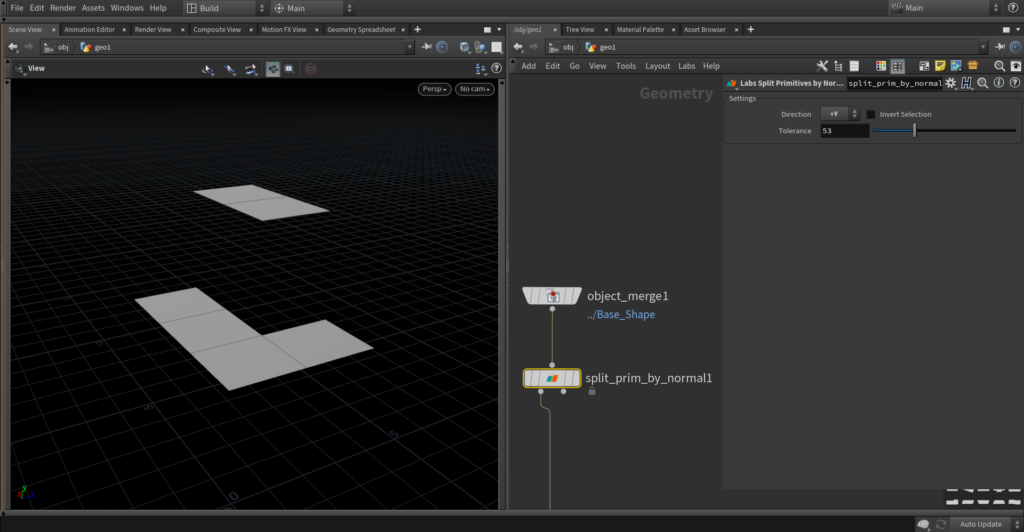
Now is the time it gets interesting. I borrowed next part from Anastasia Opara and her Lake House course, this is a really interesting algorithm for fusing roof. Lets see how it’s done.
For a starter we need a for loop set to count. In the loop create an attribute called keep, integer on points. And now our first large attribute wrangle and this is the script.
int pts[], neighs_pcheck[], neighs_pcheckall[], neighs_prims[];
int max ,found, found_prim;
//For loop over all primitives
for(int pr=0; pr<@numprim; pr++)
{
//In the first part we find each prim
//that shares points with our current one
pts = primpoints(0, pr); //Points for the current prim
found_prim = 0;
foreach(int pt; pts) //Looping over the points
{
neighs_pcheck = pointprims(0, pt); //Array of prims connected to
//That point
append(neighs_pcheckall, neighs_pcheck);
}
//Largest prim num of the shared prims
max = max(neighs_pcheckall);
//Loop over found prims
for(int num=0; num<=max; num++)
{
//Make sure we don't include our current prim
if(num!=pr)
{
found=0;
//Loop over prims with shared points
foreach(int n; neighs_pcheckall)
{
//Keep count of connected prims
if(n == num)
{
found++;
}
}
//If prims share 2 points then they are neighbours
if(found>0 && found%2==0)
{
append(neighs_prims, num);
}
}
}
//Set keep attribute on our prim and our neighbouring prim
if(len(neighs_prims)>0)
{
setprimattrib(0, 'keep', pr, 1 ,'set');
setprimattrib(0, 'keep', neighs_prims[0], 1 ,'set');
found_prim+=1;
break;
}
}
i@stop = found_prim ? 1: 0;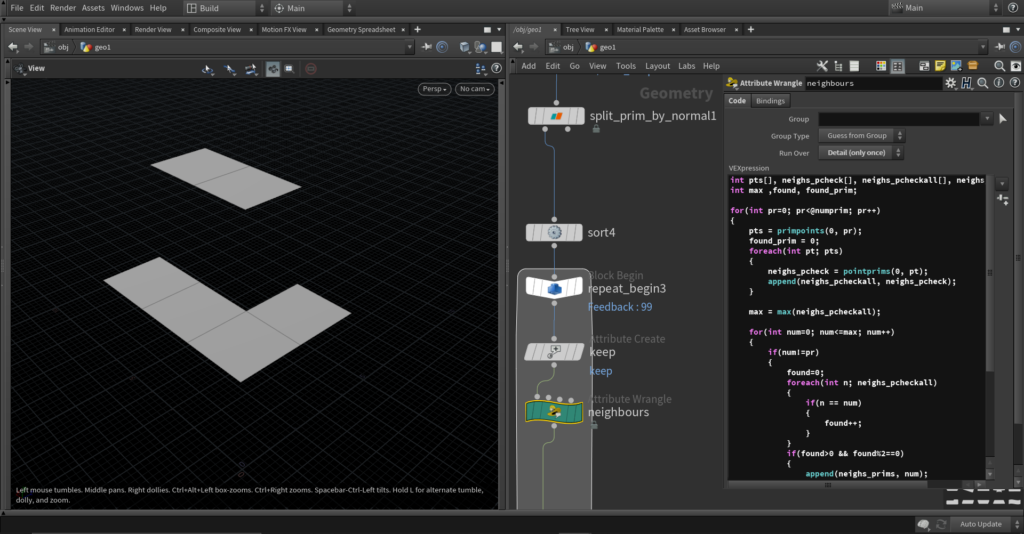
Hope that wasn’t too much to take in, I needed to break it down to understand it completely. Now we use that keep attribute, split prims by @keep==0. Left output will be ones that are not connected and right ones are the ones we are fusing. To fuse them drop down a divide and remove shared edges, then a facet with remove inline points. At the end merge everything together. Run the loop a bunch of times, I do 100, just to be sure all the pieces are fused.
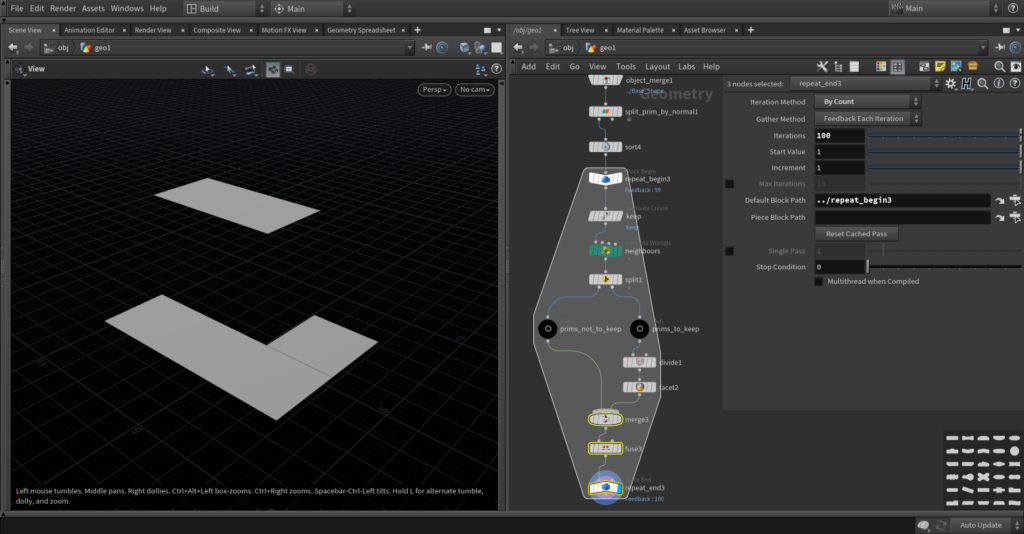
Now we’ll use a little trick called polyexpand2D. Drop down a primitive loop and polyexpand in it, set the offset to something big like 10. Set mode to offset surfaces and uncheck output outside. Also check output attribute edgedist. That’s what we are going to use to move our roof up. Edgedist is a vertex attribute so we need to promote it to points to use it in our wrangle.
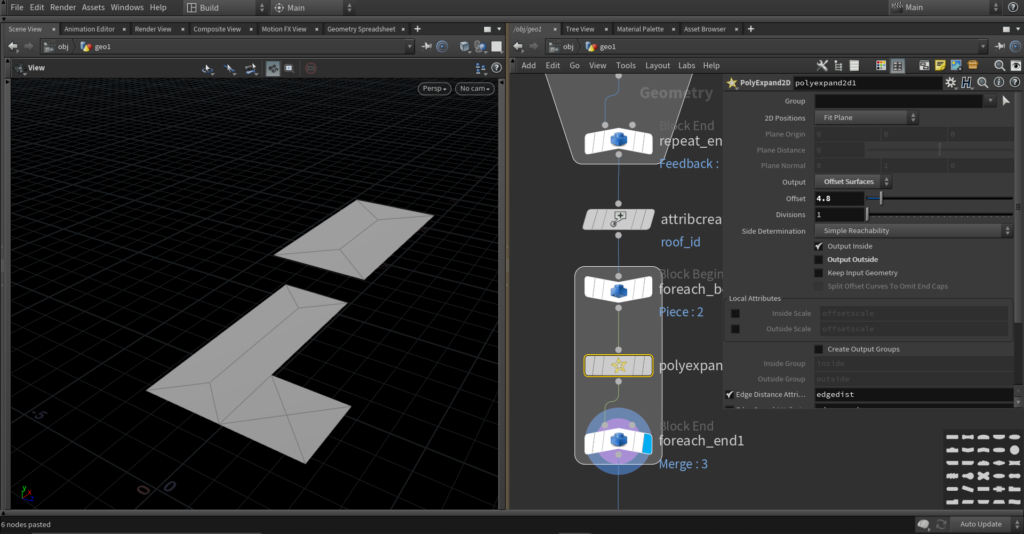
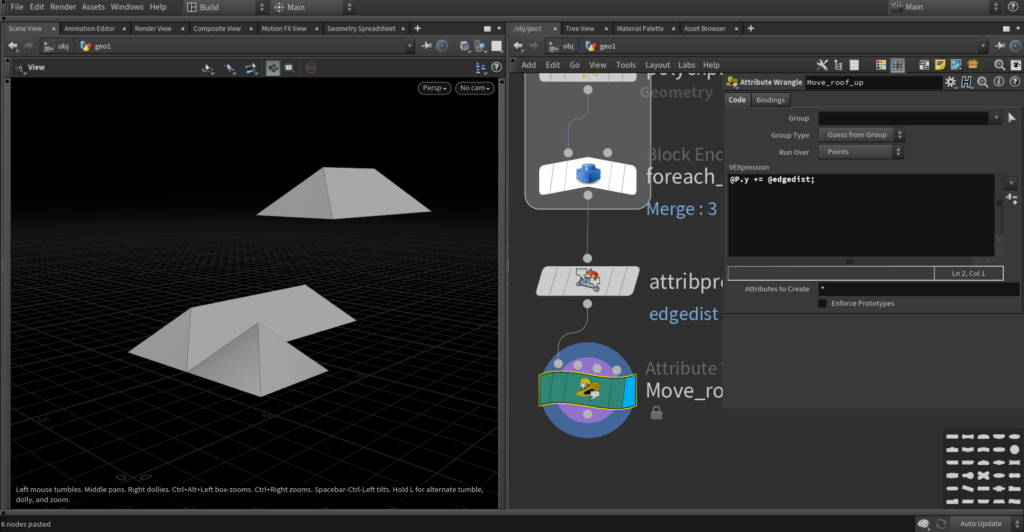
That covers our base roof and our blockout shape for the house. Next we’ll be more on the data side, creating attributes for using later down the line.